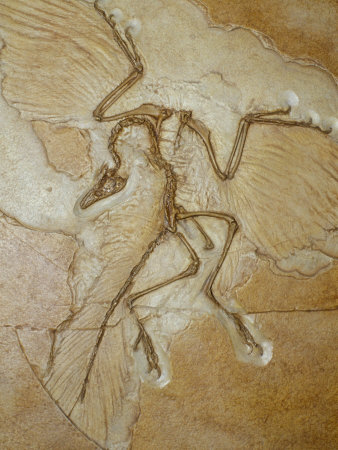You know it- the eloquent scene at the end of Jurassic Park where the exhausted and soiled (but just enough to make him even MORE sexy) Dr. Grant stares out the window at the sea birds flying alongside the rescue helicopter. Do dooo, do do dooo, do do DOOO, do do do doooo…
Most movies’ final scenes are tributes to the profound emotional change the main character experiences. But not Jurassic Park. Sure, Dr. Grant likes kids now. Whatever. The final images of Jurassic Park acknowledge the taxonomic link between dinosaurs and birds- one of the most important connections made in modern day zoology.
The tricky thing about taxonomy that deals with long-gone species is that, well, they’re dead. We can use fossils to look at what bones they had, where they were, what shape they were, what other bones they were touching. Then we make our best guesses at what muscles and other soft tissues were connected where. Then, we make another best guess at what evolutionary path these structures took through time. It’s a game of logic and guessing. But one little critter helped to make the dino-bird connection less of a guess.
Archaeopteryx. “Archaeo” meaning ancient, “pteryx” meaning wing. “Old winged one”, you might call it. The fossil dates back to the late Jurassic Period (notable for crowd favorites like the long-necked Diplodicus, bipedal predators like Allosaurus, and the spiky-tailed Stegosaurus). Now take a good, hard look at old winged one, pictured below. What do you see?

We’ve got a long frazzlin’ little neck happening. And a long tail- deducible from the numerous caudal vertebrae. Long legs with a funky, kind of extended ankle joint. How do you think this thing stood? Probably upright. That tail seems like it would balance the animal as it stood bipedally on its long foldable legs. Check out those arms. Do they end in hands? Not really, they end in long creepy fingers. Though you can’t tell from the picture, it’s about the size of a grackle. But we still haven’t mentioned the most important feature.
Feathers. There are clear, unmistakable, beautiful impressions of feathers surrounding the animal. Those are undoubtedly wings with obvious, perfectly structured flight feathers. Caudal (tail) feathers are also present. We have a flying, feathered reptile here, folks. A bird. What many argue is the first bird.
The presence of feathers is one of the defining characteristics of modern-day birds, and feathers’ dino-origins are so fascinating that a whole new post is necessary to do them justice (keep your eye out, it’ll be a good one). The finding of the feathered Archaeopteryx fossil turned the field of taxonomic zoology on its head. Here we have an unmistakable transition fossil that shows us a freeze-frame of group of dinosaurs becoming modern-day birds. The predatory raptors like Velociraptor reduced in size (which would later make flight manageable). They sprouted feathers, which decorated their arms. As these feathered mini-raptors fled predators, it became advantageous for those with feathers that provided a little lift to evade being eaten. So, flight was selected for and boom. We have small, flying, feathered dinosaurs. We have birds.
One more time. Sing it with me, people. Do dooo, do do dooo, do do DOOO, do do do doooo…
Although this phylogenetic hypothesis is generally accepted in the scientific community, there is debate. For further investigation:
A reconsideration of the reptilian relationships of Archaeopteryx. Tarsitano, Samuel. Max K. Hech. Zoological Journal of the Linnean Society. Volume 69, Issue 2, pages 149–182, June 1980
Evidence from Claw Geometry Indicating Arboreal Habits of Archaeopteryx. Feduccia A. Science 5 February 1993. Vol. 259 no. 5096 pp. 790-793.
Feathers of Archaeopteryx: Asymmetric Vanes Indicate Aerodynamic Function Science. Feduccia A. 9 March 1979. Vol. 203 no. 4384 pp. 1021-1022.

